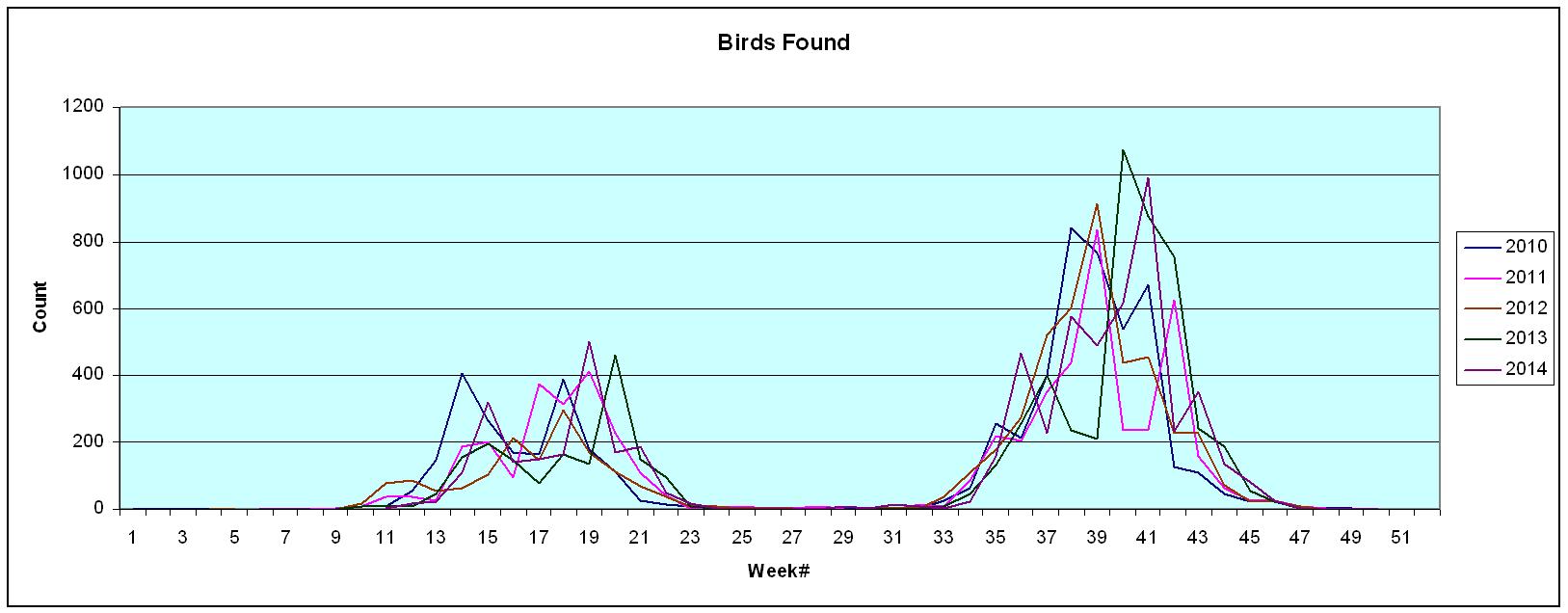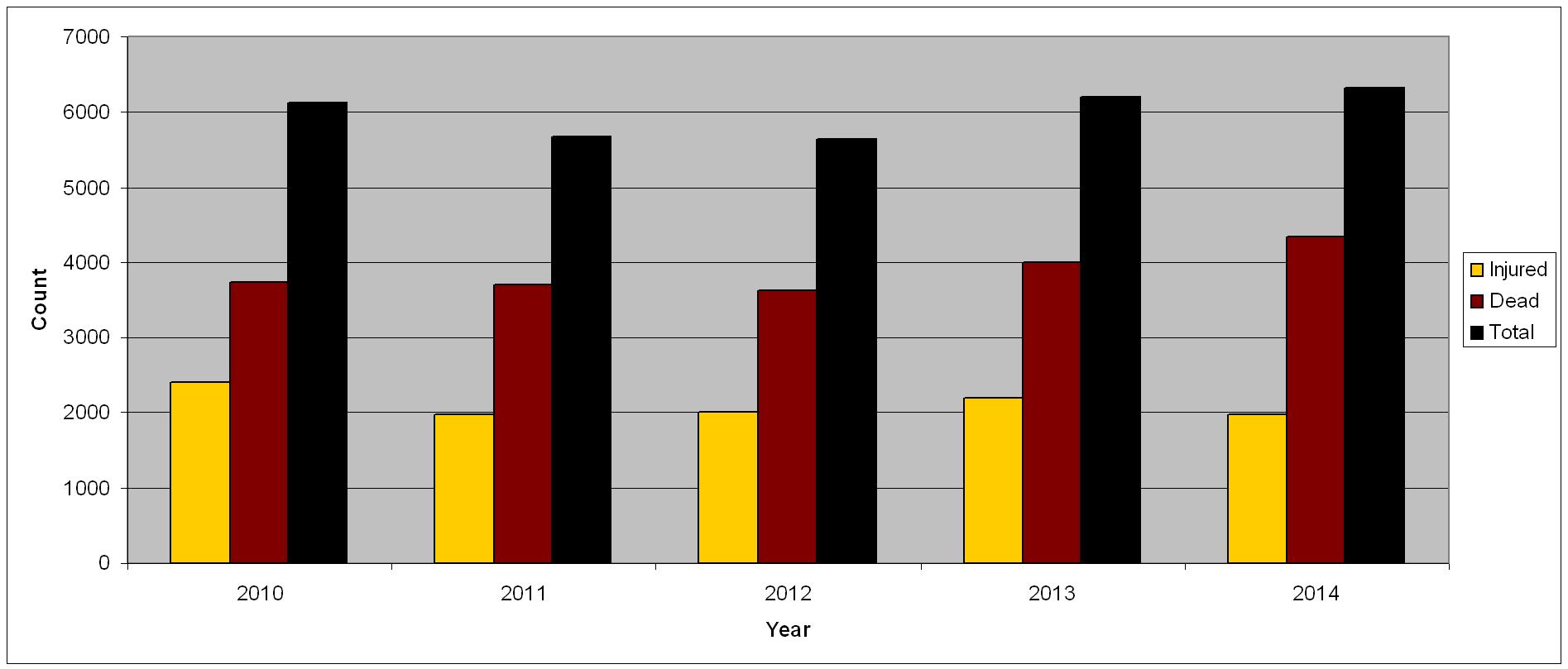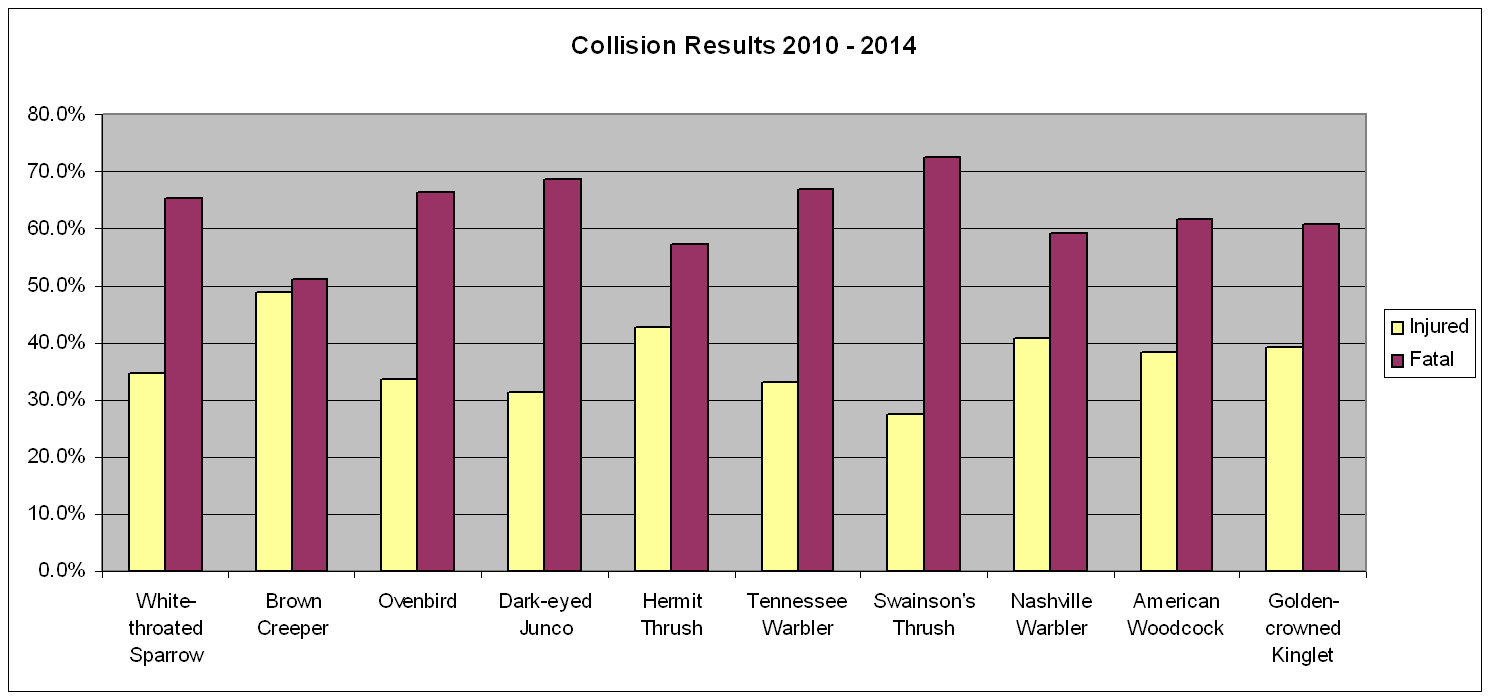Results from data collected 2010 - 2014.
CBCM has recovered over 170 species of birds in an approximately one mile square area of downtown Chicago. The table below represents the most common found birds over a 5 year period.
Most Common Species Recovered:
| Name | 2010 | 2011 | 2012 | 2013 | 2014 | Total |
| White-throated Sparrow | 1211 | 702 | 672 | 1119 | 687 | 4391 |
Brown Creeper | 679 | 484 | 406 | 519 | 344 | 2432 |
Ovenbird | 310 | 503 | 414 | 343 | 475 | 2045 |
Hermit Thrush | 321 | 250 | 234 | 374 | 279 | 1458 |
Dark-eyed Junco | 291 | 232 | 262 | 300 | 296 | 1381 |
Tennessee Warbler | 104 | 224 | 287 | 249 | 446 | 1310 |
Swainsons Thrush | 158 | 206 | 196 | 159 | 260 | 979 |
Nashville Warbler | 179 | 233 | 155 | 158 | 173 | 898 |
American Woodcock | 165 | 148 | 151 | 181 | 159 | 804 |
Golden-crowned Kinglet | 271 | 73 | 94 | 134 | 84 | 656 |
When birds migrate:

Although collisions happen every day, the above chart represents when migrating birds are present. Shown is the weekly count (5 years). The spring migration occurs in the period of weeks 9 - 23 and fall migration weeks 33 - 46. We see a higher number (almost 3 times) during fall because the young birds are returning along with the parents to their wintering locations in the south. Many of these young birds never make it and as a result will not return north to propagate the species.
By type (result of collision):

Approximately 6,000 birds were recovered each year, sadly two-thirds (average) of the recorded collisions are fatal. Since CBCM operations are at ground level we can speculate this number is actually higher because there are many areas that monitors cannot access (overhangs, open-air courtyards, roof tops, etc), and many birds have been scavenged by predators before monitors can get to them.
By species/type:

The result of the collision vary, the above chart represents the most common species and the recorded results.

